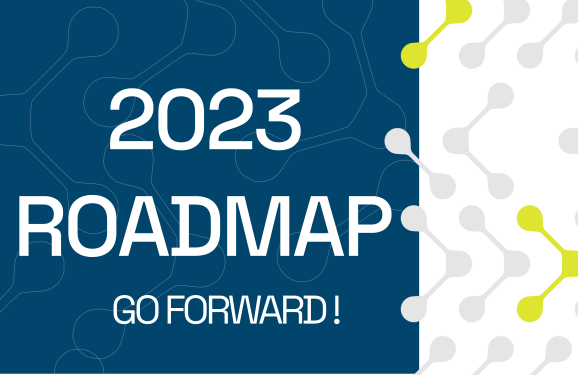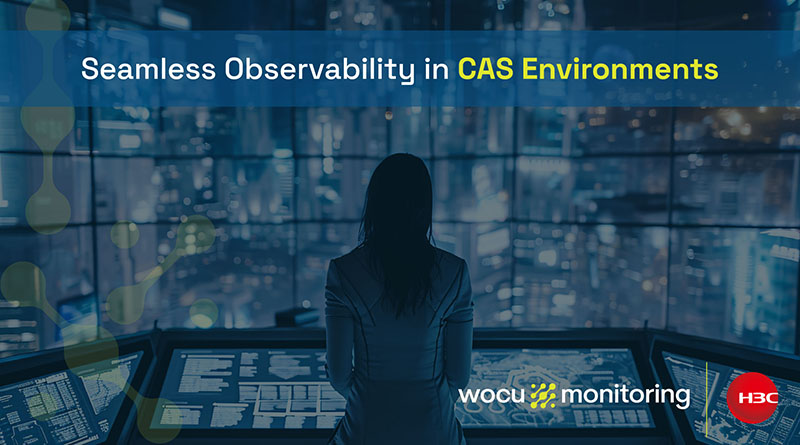
The WOCU-Monitoring team has proposed, evaluated, and finally defined the roadmap for this new cycle.
Remaining true to the quality and excellence that characterize our product, we have crafted a strategic plan adapted to the current context, customer input, and addressing new challenges within a framework of evolution and continuous improvement.
Our goal for this year is to continue expanding WOCU-Monitoring‘s presence and strengthening our position as market leaders.
Therefore, it is essential that the 2023 Roadmap is known and visible, at least to all parties involved in one way or another.
1. Monitoring of Virtual Environments and Containers
Every technology has its peculiarities, which complicates, to some extent, the representation of information as it does not follow the same pattern. To simplify this situation, we will design a specific module to visualize the details of technologies based on virtual environments such as VMWare or Proxmox and container-based technologies like Kubernetes.
2. Advanced Inventory Management
We are ambitious, that’s why we want to equip WOCU-Monitoring with greater capabilities to manage a more functional and complete asset inventory. We will achieve this by changing the JSON format to a more structured data type that can be displayed in a more readable format and by creating a history to consult previous versions or integrate an inventory tool like GConf.
3. Intrusion Detection
Detecting unauthorized access on a network and being alerted by an IDS is the right and usual thing to do. Having a single tool that integrates active and passive system monitoring, along with intrusion detection, is another level.
We want to integrate an Intrusion Detection System (IDS), which involves creating new spaces where alerts are concentrated, a section where intrusion rules can be defined, and integration with one or more tools capable of detecting anomalous situations (Snort or Suricata).
4. Custom Dashboards
With the intention of making WOCU-Monitoring more customizable and modern, we have set out to create custom Dashboards where widgets can be configured and relocated in different views. Ultimately, users should be able to freely configure dynamic dashboards to adapt to emerging needs at any given time.
5. Online Demo of WOCU-Monitoring
The best way to showcase the potential of our solution is to make it accessible to everyone. We are going to develop an online demo version of WOCU-Monitoring, open to the public and where a diverse range of monitoring services can be used.
We want it to be accessible 24/7, for the instance to be cleaned every day, to have a secure platform, manage administration profiles, etc. In short, we want to show and demonstrate why WOCU-Monitoring stands out in the market.
6. Complex Architectures with Shinken
To strengthen the usability of WOCU-Monitoring, we intend to host the configuration of multiple monitoring Realms managed in a single Import-Tool, which we have dubbed Single Arbiter.
And to improve the scalability of the solution, we are considering allowing the Broker to have multiple instances, thereby solving potential bottlenecks. We have named this mechanism Multi Broker.
Together, they provide a single point of configuration and increase the scalability of the solution transparently.
7. Cloud Deployments
It is unquestionable that the present and future lie in the cloud. Numerous infrastructures are being built on platforms of all kinds, both public and private clouds. For this reason, we are determined to deploy WOCU-Monitoring in the cloud.
We want to be present in prominent Marketplaces (Google Cloud or AWS). To make this a reality, we will dedicate efforts to simplify the installation and configuration processes of the most basic version of WOCU-Monitoring. For later on, to distribute architectures that increasingly cover the demanded needs in the same way.
8. Internationalization of Contents
It’s about time! We are going to translate the whole content of our website into English.
Our content is aimed at Spanish-speaking audiences, which is a limitation when expanding horizons. This year, we will internationalize our website with the goal of reaching new audiences.
Because in the world of technology, we all speak a common language, and to go further, we all speak the same language.
9. Performance Graphs with InfluxDB
For a long time, PNP4Nagios has been a stable solution for graph representation using RRD. Until now, as it has recently become unmaintained and consequently not updated, not even against new vulnerabilities. It is for this reason that we are considering safer and more maintainable alternatives to integrate with WOCU-Monitoring.
One of the options with an advantage to replace PNP4Nagios is to simultaneously use Nivo and InfluxDB. Nivo is a React library that can be used alongside InfluxDB to represent the same information. InfluxDB is a metrics-oriented database that we already use to efficiently store the handled metrics.
10. Virtualized Image (Trial Version)
WOCU-Monitoring is evolving towards a clear goal: to continue providing solutions tailored to a greater number of use cases.
We intend to prepare an image of a preconfigured virtual machine of WOCU-Monitoring, which allows demonstrations in practically any environment in a very direct, convenient, and stable way.
11. Machine Learning on Metrics
In WOCU-Monitoring, we collect numerous data from machines and applications, which, given their practicality, we can extract and obtain very valuable information. Along these lines, we want to leverage the power of artificial intelligence to alert of possible anomalous behaviors.
When a regularly flowing network experiences an unexpected variation, it is necessary to have appropriate mechanisms to help detect them. We are going to integrate an Unexpected Anomaly Detection (UAD) system, analyzing the stored data in our metrics database: InfluxDB.
12. Visualization of Business Processes
At WOCU-Monitoring, we are always studying new ways of representing, channeling, and disseminating the collected information.
This time, we intend to update the Business Processes module, using a radar chart that includes the operational status of the involved parts, offering a detailed overview of the current situation of the monitored logical relationship.
13. Online Client Portal
We want satisfied clients who can focus on what really matters. It is up to us to streamline processes that facilitate tool management from all possible angles, such as being able to know and verify the status of the contracted license and the days remaining for its renewal from the application itself, without resorting to contract inquiries or referring the doubt to third parties.
14. Check Performance
Last year, we made a significant effort to improve the speed of checks, resulting in improved response times and decreased CPU consumption of the machines on which our tool runs. In order to continue stabilizing the service, we are considering different approaches: changing our Python interpreter to a more efficient one (version 3.11), switching to PyPy, using a compiler like Cython, or even transpiling to a language as efficient as Rust.



